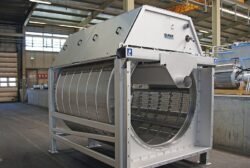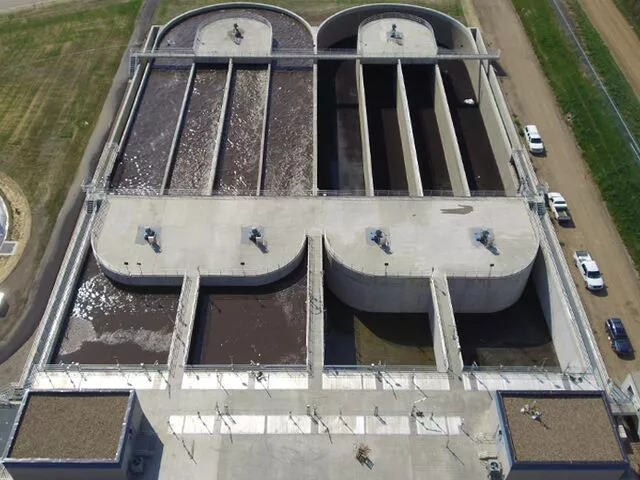
Aerobic Digestion Wastewater Treatment
Aerobic Digestion Wastewater Treatment: A Comprehensive Guide
Introduction
In an age where sustainable practices and effective resource management have become paramount, aerobic digestion emerges as a critical process in wastewater treatment. Accounting for a significant portion of municipal and industrial wastewater treatment processes, aerobic digestion utilizes microorganisms in the presence of oxygen to break down organic matter, facilitating the conversion of waste into clean water and valuable biogas. As water scarcity and environmental concerns continue to escalate, understanding aerobic digestion’s role and effectiveness in wastewater treatment becomes essential. According to recent industry analyses, this method not only reduces the volume of sludge but also transforms waste into a renewable energy source, thus aligning with global sustainability goals.
This article aims to provide an in-depth exploration of aerobic digestion, addressing its mechanisms, advantages, challenges, and innovations. We will also consider real-world applications, backed by empirical data, making it a vital resource for wastewater treatment professionals and facility managers.
1. Understanding Aerobic Digestion
1.1 Definition and Mechanism
Aerobic digestion is a biological treatment process that harnesses the metabolic activity of aerobic microorganisms to degrade organic matter in wastewater. The mechanism primarily involves three stages: hydrolysis, acidogenesis, and methanogenesis.
- Hydrolysis: Complex organic matter is broken down into simpler compounds through enzymatic action.
- Acidogenesis: intermediate compounds are converted into volatile fatty acids and gases such as carbon dioxide and hydrogen by fermentative bacteria.
- Methanogenesis: Methanogenic bacteria convert these volatile fatty acids into methane gas (CH₄), carbon dioxide, and additional microbial cells.
This multi-faceted approach ensures efficient waste treatment while minimizing environmental pollution. Research published in leading environmental engineering journals indicates that aerobic digestion systems can achieve organic reduction rates of over 90%, depending on specific operational conditions and waste characteristics.
1.2 Types of Aerobic Digestion Systems
The two primary types of aerobic digestion systems are:
-
Batch Aerobic Digesters: In these systems, a specific quantity of wastewater is treated in batches. They are beneficial for facilities with variable inflow rates and allow for process control.
- Continuous Aerobic Digesters: These systems operate continuously, allowing for a steady flow of wastewater treatment. While they require more sophisticated controls and monitoring, they can provide consistent treatment performance.
2. Advantages of Aerobic Digestion
2.1 Environmental Benefits
Aerobic digestion significantly reduces greenhouse gas emissions compared to anaerobic processes. According to the United States Environmental Protection Agency (EPA), aerobic digestion can cut methane emissions by approximately 50%, positioning it as an environmentally preferable option in many scenarios.
2.2 Resource Recovery
The process of aerobic digestion not only treats wastewater but also enables the recovery of useful by-products. The biogas produced during digestion can be harnessed for energy production. In fact, studies indicate that facilities utilizing aerobic digestion can generate enough energy to offset up to 30% of their operational energy costs, contributing to a more sustainable energy footprint.
2.3 Sludge Reduction
One of the most compelling advantages of aerobic digestion is the substantial reduction in the volume of sludge produced. Estimates suggest that aerobic processes can reduce waste sludge by approximately 50% compared to conventional methods, thus lowering disposal costs and minimizing environmental impact.
2.4 Improved Effluent Quality
Aerobic digestion often results in superior effluent quality due to the effective removal of pathogens and toxins. Facilities with aerobic digestion systems report effluent that often meets or exceeds regulatory discharge standards.
3. Challenges in Aerobic Digestion
3.1 Operational Costs
While aerobic digestion presents numerous benefits, operational costs can pose challenges. The aeration process typically consumes a significant amount of energy, with estimates suggesting that aeration can account for up to 60% of total operating costs in wastewater treatment plants. Facilities may need to invest in energy-efficient aeration systems or alternative energy sources to mitigate these costs.
3.2 Process Stability
Maintaining process stability in aerobic digestion is crucial. Fluctuations in influent quality, temperature, and loading rates can lead to process upsets. According to a study published by the Water Environment Research Foundation (WERF), monitoring and control systems that incorporate real-time data can improve system stability and performance.
3.3 Sludge Management
Although aerobic digestion reduces sludge volume, managing the residual treated sludge can pose logistical challenges. to address these challenges, facilities often employ advanced dewatering technologies that can further reduce the volume of sludge for disposal.
4. Innovations in Aerobic Digestion Technology
4.1 Advanced Aeration Systems
Recent advancements in aeration technologies, such as fine bubble diffusers and membrane aerated biofilm reactors (MABRs), are enhancing the efficiency of aerobic digestion processes. These systems have been shown to decrease energy consumption per kilogram of BOD (biochemical oxygen demand) removed, with up to 30% energy savings reported in some case studies.
4.2 Integrated Systems
The integration of aerobic digestion with other waste treatment processes, such as anaerobic digestion and membrane bioreactors (MBRs), is emerging as a trend. This integrated approach allows for improved nutrient removal, better resource recovery, and enhanced overall treatment efficiency. Research suggests that combined treatment systems can improve resilience to fluctuations in influent quality while optimizing resource recovery.
4.3 Automation and Data Analytics
Utilizing automation and data analytics for process monitoring and control can significantly enhance the efficiency of aerobic digestion systems. Implementing machine learning algorithms provides insights into operational parameters, enabling real-time adjustments to optimize performance. According to a report by the International Water Association (IWA), facilities embracing these technologies have seen operational performance improvements of up to 20%.
5. Practical Considerations for Implementation
5.1 Choosing the Right System
When selecting an aerobic digestion system, facility managers must assess several factors, including:
- Influent Characteristics: Understanding the biochemical composition of the incoming waste stream is critical to ensuring effective microbial treatment.
- Treatment Goals: Facilities must clearly define their treatment objectives, whether it is maximizing biogas production, reducing sludge volume, or achieving stringent effluent quality standards.
- Budget Constraints: Understanding the long-term operational costs versus initial capital expenditure is essential for making an informed decision.
5.2 Maintenance and Monitoring
Regular maintenance of aerobic digestion systems is vital to ensure optimal functioning. This includes routine inspections, cleaning aeration equipment, and monitoring key performance indicators (KPIs), such as dissolved oxygen levels, mixed liquor suspended solids (MLSS), and volatile solids reduction.
5.3 Engaging Stakeholders
Engaging relevant stakeholders, including regulators and community members, is essential when implementing or upgrading aerobic digestion systems. Transparent communication regarding the benefits and impacts of aerobic digestion can foster community support and streamline the permitting process.
Conclusion
Aerobic digestion has proven to be an indispensable technology in the field of wastewater treatment, offering a plethora of environmental, economic, and resource recovery benefits. While challenges remain, innovations in technology and operational practices are paving the way for more efficient systems. As global demand for sustainable water management practices intensifies, understanding and effectively implementing aerobic digestion processes will be critical for wastewater treatment professionals and facility managers alike.
With its ability to transform waste into valuable resources while significantly addressing environmental concerns, aerobic digestion stands out as a forward-thinking solution that aligns with the principles of a circular economy. As we move towards a more sustainable future, adopting and optimizing aerobic digestion in wastewater treatment systems will be vital in conserving water, recovering energy, and safeguarding our environment for generations to come.
By staying informed on the latest advancements and best practices, industry professionals can play a pivotal role in advancing these necessary technologies and ensuring that wastewater treatment continues to evolve in efficiency and sustainability.


